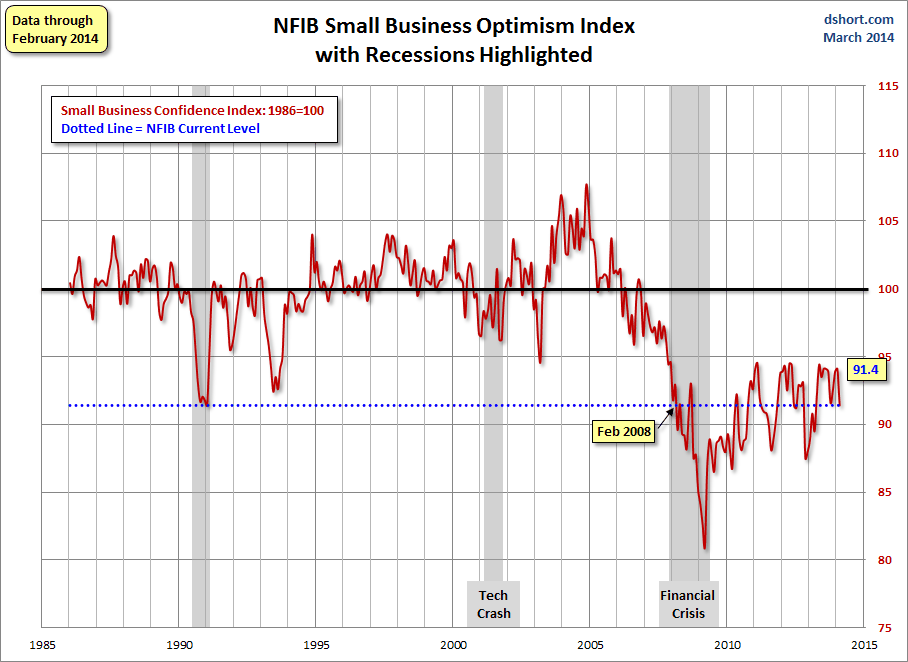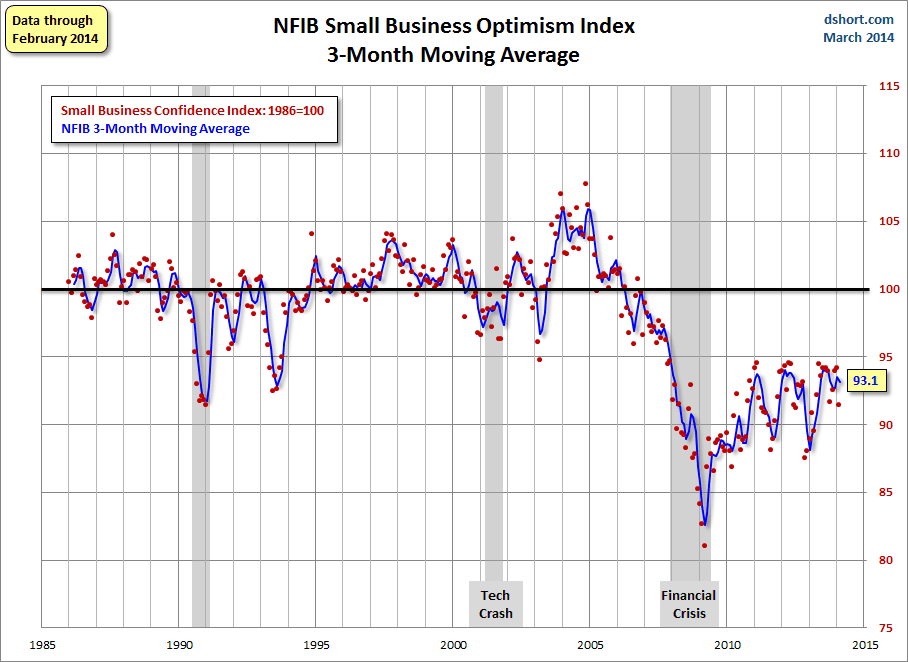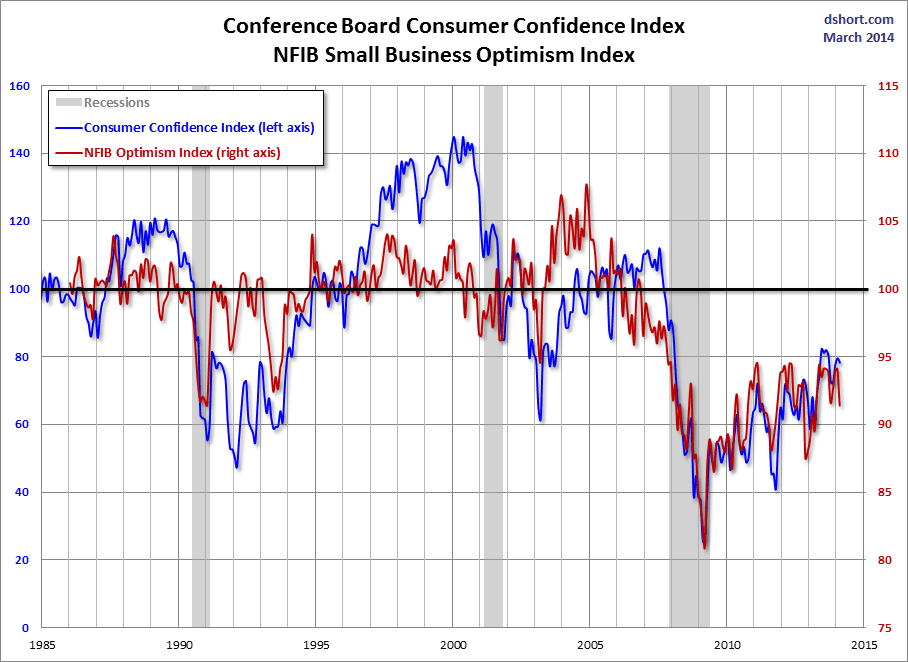The latest issue of the NFIB Small Business Economic Trends is out today. The March update for February came in at 91.3, down 2.7 points from the previous month's 94.1, ending a three-month string of improvement. Today's headline number has slumped to the 12.1 percentile in this series. Since its initial recovery following its Great Recession trough, this index has been stuck in an extremely volatile range for the past three years. Since January of 2011, it has repeatedly bumped a ceiling around the 94.5 level and then retreated.
The Investing.com forecast was for 95.3.
NFIB's chief economist once again points a finger at Washington as the source for small-business doldrums.
"Uncertainty is a major cause of the Index's dip. Lacking any progress in Washington and facing continued unknowns with the healthcare law, the EPA, the minimum wage, tax reform and more, it is no surprise that the Small Business Optimism Index fell, reversing a few months of modest gains," said NFIB chief economist Bill Dunkelberg. "As long as uncertainty remains high, owners will remain cautious when it comes to increasing inventory. Business owners aren't going to bet their money on a future they cannot see clearly."
Here is the opening summary of the news release.
The Small Business Optimism Index fell 2.7 points to 91.4, a substantial reversal in an unexciting January measure but ends a 3 month improvement trend. Only one of the Index components improved, three were unchanged, and six were lower, indicating that the small business half of the economy is still adding little to growth beyond that needed to support population growth. The substantial decline in the Index is consistent with the prospect that GDP growth will remain in the mid 2 percent range barring some exceptional good news, unlikely in this election year. (Link to news release).
The first chart below highlights the 1986 baseline level of 100 and includes some labels to help us visualize that dramatic change in small-business sentiment that accompanied the Great Financial Crisis. Compare, for example the relative resilience of the index during the 2000-2003 collapse of the Tech Bubble with the far weaker readings of the past four years. The NBER declared June 2009 as the official end of the last recession.
The average monthly change in this indicator is 1.29 points. To smooth out the noise of volatility, here is a 3-month moving average of the Optimism Index along with the monthly values, shown as dots.
Inventories And Sales
The findings on small business inventories and sales continue to underscore the general pessimism of the survey. The excerpts below are from the latest monthly report (PDF format).
| The net percent of all owners (seasonally adjusted) reporting higher nominal sales in the past 3 months compared to the prior 3 months improved 2 points to a net negative 8 percent, typical of the 2013 experience. Sixteen (16) percent cite weak sales as their top business problem, still above levels experienced in "normal" times. The net percent of owners expecting higher real sales volumes plunged 12 points to 3 percent of all owners, reversing our previous gains. |
Credit Markets
Has the Fed's zero interest rate policy and quantitative easing had a positive impact on Small Businesses?
| Five percent of the owners reported that all their credit needs were not met, 1 point above the record low. Twenty-nine (29) percent reported all credit needs met, and 53 percent explicitly said they did not want a loan. Only 2 percent reported that financing was their top business problem. Thirty (30) percent of all owners reported borrowing on a regular basis, down 1 point and only 2 points above the record low. |
NFIB Commentary
This month's "Commentary" section opens with the following observations:
| The one "green shoot" in the January survey, a surge in hiring plans, was crushed by the continued onslaught of a wintry recovery now in its 5th year. The February report on net new jobs was better than expected, but inadequate to the task of reducing the unemployment rate which rose a tenth of a point. As disturbing as the decline in job creation plans was, the plunge in expectations for improvements in real sales in the coming months and for business conditions 6 months from now, undoubtedly the reason for the decline in hiring plans. Averaging 22 percent from 1973 through 2007, a net 22 percent expected real sales volumes to rise in the following 3 month period. In February, it was a meager net 3 percent. |
Business Optimism and Consumer Confidence
The next chart is an overlay of the Business Optimism Index and the Conference Board Consumer Confidence Index. The consumer measure is the more volatile of the two, so I've plotted it on a separate axis to give a better comparison of the volatility from the common baseline of 100.
These two measures of mood have been highly correlated since the early days of the Great Recession.



